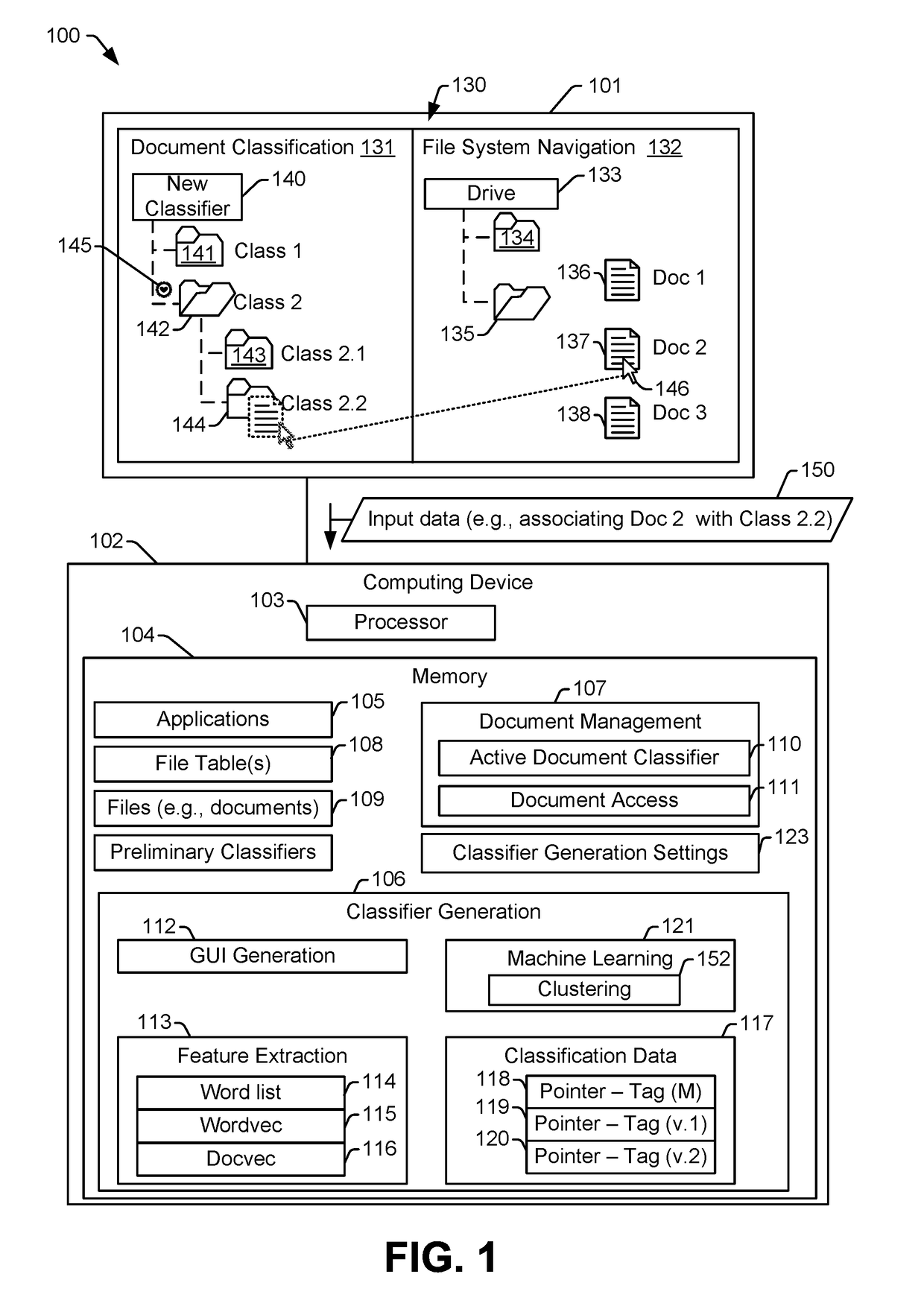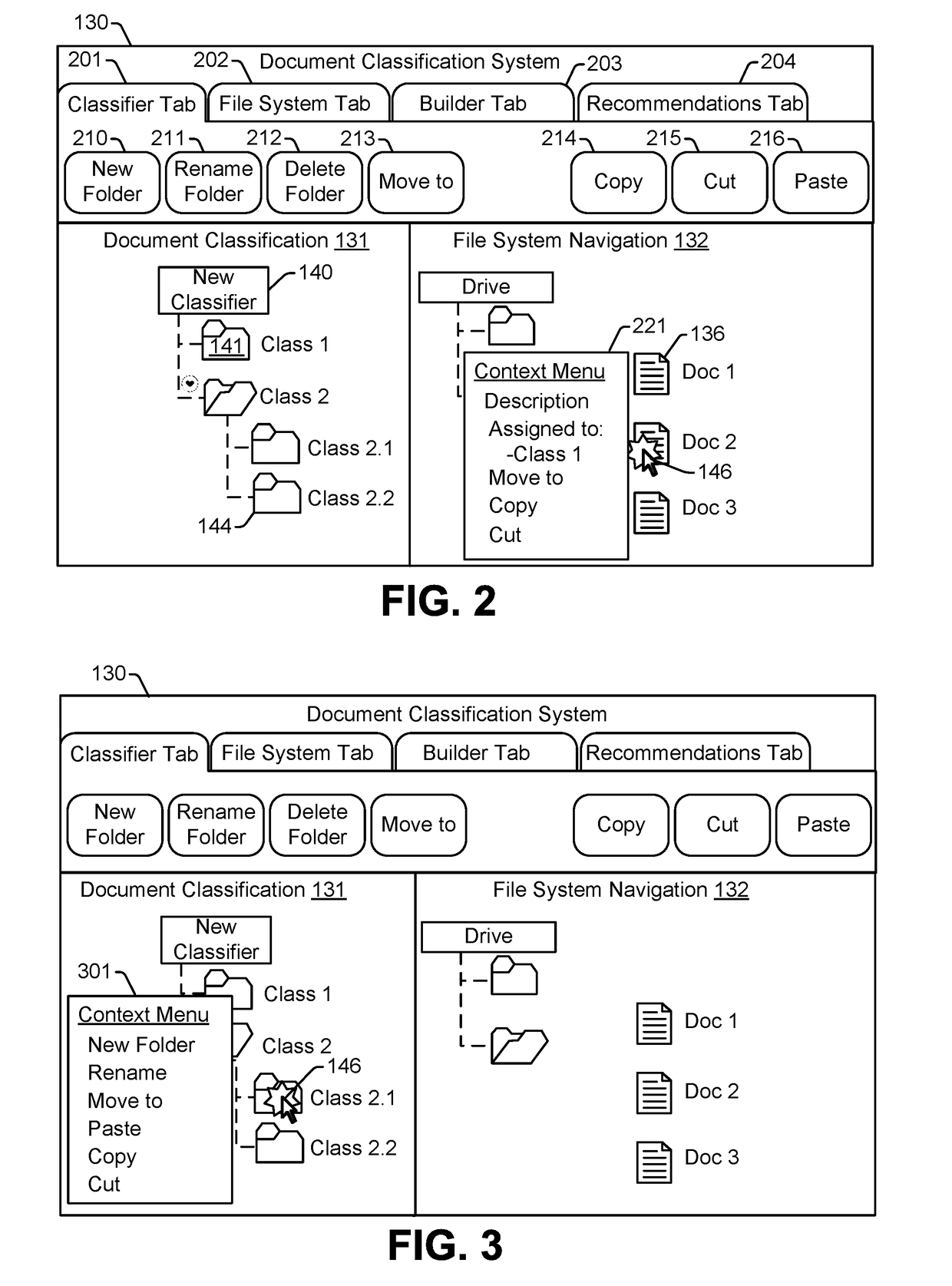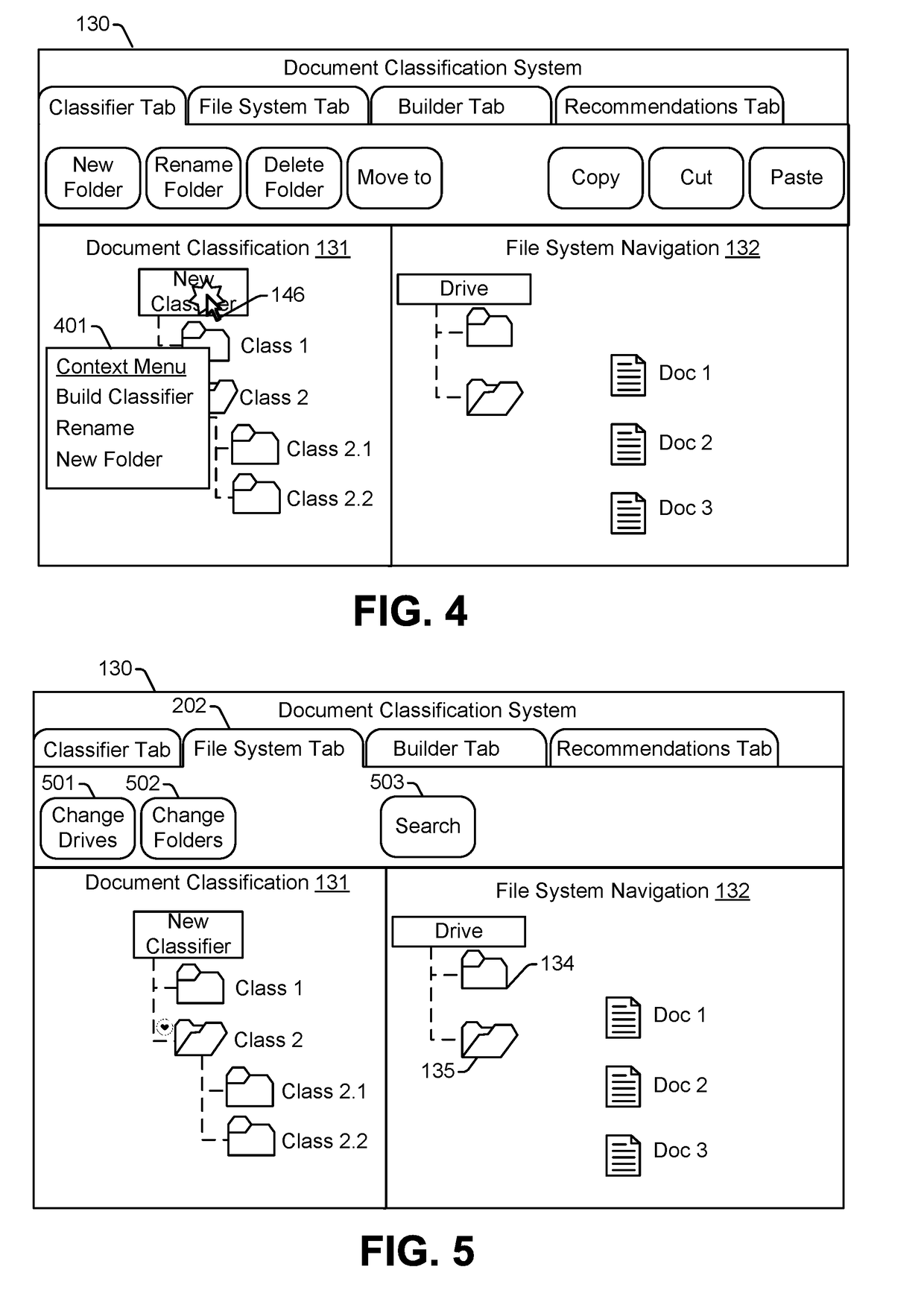Generation of document classifiers
a document classifier and document technology, applied in the field of document classifier generation, can solve the problems of data scientist unwillingness to (or inability to) give data scientist access to sensitive records, data scientist inability to generate document classifiers, and inability to reliably function, etc., to achieve the effect of simplifying generating and managing
- Summary
- Abstract
- Description
- Claims
- Application Information
AI Technical Summary
Benefits of technology
Problems solved by technology
Method used
Image
Examples
Embodiment Construction
[0029]FIG. 1 illustrates a particular example of a system 100 that is operable to generate a document classifier. The system 100 includes a display device 101 coupled to a computing device 102. The computing device 102 includes a processor 103 and a memory 104 accessible to the processor 103. The processor 103 is configured to execute instructions from the memory 104 to perform various operations described herein, such as operations to generate a document classifier. For example, as explained further below, the system 100 is configured to use an intuitive graphical user interface (GUI) 130 to enable a user to define classes (e.g., document classes) and to assign documents to the classes. The system 100 may also be configured to use clustering to assist the user with classifying documents by recommending documents for classification, by recommending new classes, or both. The documents assigned to the classes may be used to generate a supervised training data set to build a document c...
PUM
 Login to View More
Login to View More Abstract
Description
Claims
Application Information
 Login to View More
Login to View More - R&D
- Intellectual Property
- Life Sciences
- Materials
- Tech Scout
- Unparalleled Data Quality
- Higher Quality Content
- 60% Fewer Hallucinations
Browse by: Latest US Patents, China's latest patents, Technical Efficacy Thesaurus, Application Domain, Technology Topic, Popular Technical Reports.
© 2025 PatSnap. All rights reserved.Legal|Privacy policy|Modern Slavery Act Transparency Statement|Sitemap|About US| Contact US: help@patsnap.com



